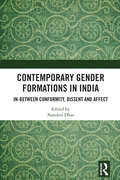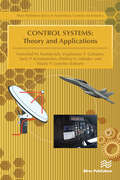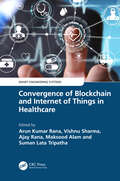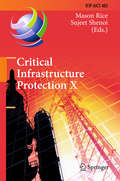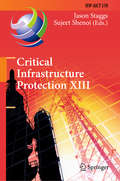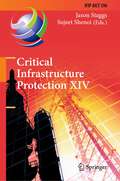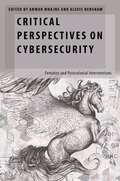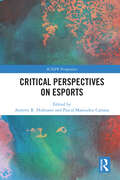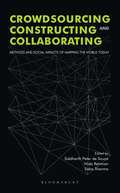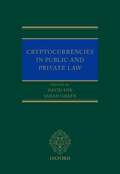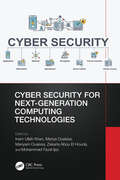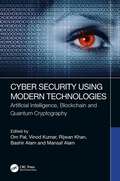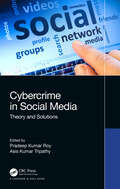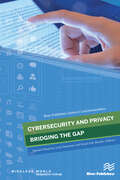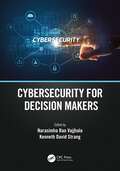- Table View
- List View
Conspiracy Theories and the People Who Believe Them
Conspiracy theories are inevitable in complex human societies. And while they have always been with us, their ubiquity in our political discourse is nearly unprecedented. Their salience has increased for a variety of reasons including the increasing access to information among ordinary people, a pervasive sense of powerlessness among those same people, and a widespread distrust of elites. Working in combination, these factors and many other factors are now propelling conspiracy theories into our public sphere on a vast scale. In recent years, scholars have begun to study this genuinely important phenomenon in a concerted way. In Conspiracy Theories and the People Who Believe Them, Joseph E. Uscinski has gathered forty top researchers on the topic to provide both the foundational tools and the evidence to better understand conspiracy theories in the United States and around the world. Each chapter is informed by three core questions: Why do so many people believe in conspiracy theories? What are the effects of such theories when they take hold in the public? What can or should be done about the phenomenon? Combining systematic analysis and cutting-edge empirical research, this volume will help us better understand an extremely important, yet relatively neglected, phenomenon.
Constitutionalising Social Media (Hart Studies in Information Law and Regulation)
This book explores to what extent constitutional principles are put under strain in the social media environment, and how constitutional safeguards can be established for the actors and processes that govern this world: in other words, how to constitutionalise social media. Millions of individuals around the world use social media to exercise a broad range of fundamental rights. However, the governance of online platforms may pose significant threats to our constitutional guarantees. The chapters in this book bring together a multi-disciplinary group of experts from law, political science, and communication studies to examine the challenges of constitutionalising what today can be considered the modern public square. The book analyses the ways in which online platforms exercise a sovereign authority within their digital realms, and sheds light on the ambiguous relationship between social media platforms and state regulators. The chapters critically examine multiple methods of constitutionalising social media, arguing that the constitutional response to the global challenges generated by social media is necessarily plural and multilevel. All topics are presented in an accessible way, appealing to scholars and students in the fields of law, political science and communication studies. The book is an essential guide to understanding how to preserve constitutional safeguards in the social media environment.
Contemporary Empirical Methods in Software Engineering
This book presents contemporary empirical methods in software engineering related to the plurality of research methodologies, human factors, data collection and processing, aggregation and synthesis of evidence, and impact of software engineering research. The individual chapters discuss methods that impact the current evolution of empirical software engineering and form the backbone of future research. Following an introductory chapter that outlines the background of and developments in empirical software engineering over the last 50 years and provides an overview of the subsequent contributions, the remainder of the book is divided into four parts: Study Strategies (including e.g. guidelines for surveys or design science); Data Collection, Production, and Analysis (highlighting approaches from e.g. data science, biometric measurement, and simulation-based studies); Knowledge Acquisition and Aggregation (highlighting literature research, threats to validity, and evidence aggregation); and Knowledge Transfer (discussing open science and knowledge transfer with industry). Empirical methods like experimentation have become a powerful means of advancing the field of software engineering by providing scientific evidence on software development, operation, and maintenance, but also by supporting practitioners in their decision-making and learning processes. Thus the book is equally suitable for academics aiming to expand the field and for industrial researchers and practitioners looking for novel ways to check the validity of their assumptions and experiences.Chapter 17 is available open access under a Creative Commons Attribution 4.0 International License via link.springer.com.
Contemporary Gender Formations in India: In-between Conformity, Dissent and Affect
The volume discusses critical issues surrounding the developments in gender movements in the last two decades in India following the Delhi rape case and the ensuing massive protests in December 2012. A critical documentation of some of the key moments surrounding the contemporary gendered formations and radicalisms in South Asia, the chapters span questions of class, caste, sexuality, digital feminisms, and conflict zones. The book looks at anger, protest, and imaginations of resistance. It showcases the ‘new’ visibility that digital spaces have opened up to lend voice to survivors who are let down by traditional justice mechanisms and raises questions regarding ‘individualized’ modes of seeking justice as against traditional ‘collective’ voices that have always been a hallmark of movements. The volume analyses and criticizes the complicity of the state and the court as agents of reinforcing gender violence – an issue that has not been theorized enough by activists and scholars of violence. Further, it also delves into the #MeToo movement and the LoSHA, as both have raised contentious, controversial, and often conflicting debates on the nature of addressing sexual harassment, particularly at the workplace. Calling for further debate and discussions of cyberspace, gender justice, sexual violence, male entitlement, and forms of neoliberal feminism, this volume will be of immense interest to scholars and researchers in the areas of women and gender studies, sociology and social theory, gender politics, political theory, democracy, protest movements, politics, media and the internet, political advocacy, and law and legal theory. It will also be a compelling read for anyone interested in gender justice and equal rights.
Contracting and Contract Law in the Age of Artificial Intelligence
This book provides original, diverse, and timely insights into the nature, scope, and implications of Artificial Intelligence (AI), especially machine learning and natural language processing, in relation to contracting practices and contract law. The chapters feature unique, critical, and in-depth analysis of a range of topical issues, including how the use of AI in contracting affects key principles of contract law (from formation to remedies), the implications for autonomy, consent, and information asymmetries in contracting, and how AI is shaping contracting practices and the laws relating to specific types of contracts and sectors. The contributors represent an interdisciplinary team of lawyers, computer scientists, economists, political scientists, and linguists from academia, legal practice, policy, and the technology sector. The chapters not only engage with salient theories from different disciplines, but also examine current and potential real-world applications and implications of AI in contracting and explore feasible legal, policy, and technological responses to address the challenges presented by AI in this field. The book covers major common and civil law jurisdictions, including the EU, Italy, Germany, UK, US, and China. It should be read by anyone interested in the complex and fast-evolving relationship between AI, contract law, and related areas of law such as business, commercial, consumer, competition, and data protection laws.
Control Systems: Theory and Applications
In recent years, a considerable amount of effort has been devoted, both in industry and academia, towards the development of advanced methods of control theory with focus on its practical implementation in various fields of human activity such as space control, robotics, control applications in marine systems, control processes in agriculture and food production.Control Systems: Theory and Applications consists of selected best papers which were presented at XXIV International conference on automatic control “Automatics 2017” (September 13-15, 2017, Kyiv, Ukraine) organized by Ukrainian Association on Automatic Control (National member organization of IFAC – International Federation on Automatic Control) and National University of Life and Environmental Sciences of Ukraine. More than 120 presentations where discussed at the conference, with participation of the scientists from the numerous countries. The book is divided into two main parts, a first on Theory of Automatic Control (5 chapters) and the second on Control Systems Applications (8 chapters). The selected chapters provide an overview of challenges in the area of control systems design, modeling, engineering and implementation and the approaches and techniques that relevant research groups within this area are employing to try to resolve these.This book on advanced methods of control theory and successful cases in the practical implementation is ideal for personnel in modern technological processes automation and SCADA systems, robotics, space and marine industries as well as academic staff and master/research students in computerized control systems, automatized and computer-integrated systems, electrical and mechanical engineering.
Controlling – Aktuelle Entwicklungen und Herausforderungen: Digitalisierung, Nachhaltigkeit und Spezialaspekte
Die in diesem Band vorgelegten Beiträge verorten das Controlling im Spannungsfeld von Digitalisierung und Nachhaltigkeit aus konzeptioneller und empirischer Perspektive: In Anbetracht aktueller weitreichender Veränderungen sieht sich das Controlling mit einer Vielzahl von Anwendungsfeldern konfrontiert, die nicht nur die Controller-Rolle maßgeblich verändern, sondern auch Familienunternehmen und Klein- und Mittelunternehmen vor besondere Herausforderungen stellen. Dieser vielschichtigen Problemlage wird der Band mit einem klaren Wissenschafts- und Praxisbezug gerecht: Empirische Befunde qualitativer und quantitativer Art werden theoretisch fundiert dargelegt sowie durch praktische Beispiele, Fallstudien und Praxisempfehlungen ergänzt.
Convergence of Blockchain and Internet of Things in Healthcare (Smart Engineering Systems: Design and Applications)
The Internet of Things (IoT) and blockchain are two new technologies that combine elements in many ways. A system where the virtual and physical worlds interact is created by integrating pervasive computing, ubiquitous computing, communication technologies, sensing technologies, Internet Protocol, and embedded devices. A massive number of linked devices and vast amounts of data present new prospects for developing services that can directly benefit the economy, environment, society, and individual residents. Due to the size of IoT and insufficient data security, security breaches may have a huge impact and negative effects. IoT not only connects gadgets but also people and other entities, leaving every IoT component open to a wide variety of assaults. The implementation and application of IoT and blockchain technology in actual scientific, biomedical, and data applications are covered in this book. The book highlights important advancements in health science research and development by applying the distinctive capabilities inherent to distributed ledger systems. Each chapter describes the current uses of blockchain in real-world data collection, medicine development, device tracking, and more meaningful patient interaction. All of these are used to create opportunities for expanding health science research. This paradigm change is studied from the perspectives of pharmaceutical executives, biotechnology entrepreneurs, regulatory bodies, ethical review boards, and blockchain developers.Key Features: Provides a foundation for the implementation process of blockchain and IoT devices based on healthcare-related technology Image processing and IoT device researchers can correlate their work with other requirements of advanced technology in the healthcare domain Conveys the latest technology, including artificial intelligence and machine learning, in healthcare-related technology Useful for the researcher to explore new things like security, cryptography, and privacy in healthcare related technology Tailored for people who want to start in healthcare-related technology with blockchain and IoT This book is primarily for senior undergraduates, graduate students, and academic researchers in the fields of electrical engineering, electronics and communication engineering, computer science and engineering, and biomedical engineering.
The Cost of Free Shipping: Amazon in the Global Economy (Wildcat)
Amazon is the most powerful corporation on the planet and its CEO, Jeff Bezos, has become the richest person in history, and one of the few people to profit from a global pandemic. Its dominance has reshaped the global economy itself: we live in the age of 'Amazon Capitalism'. 'One-click' instant consumerism and its immense variety of products has made Amazon a worldwide household name, with over 60% of US households subscribing to Amazon Prime. In turn, these subscribers are surveilled by the corporation. Amazon is also one of the world's largest logistics companies, resulting in weakened unions and lowered labor standards. The company has also become the largest provider of cloud-computing services and home surveillance systems, not to mention the ubiquitous Alexa. With cutting-edge analyses, this book looks at the many dark facets of the corporation, including automation, surveillance, tech work, workers' struggles, algorithmic challenges, the disruption of local democracy and much more. The Cost of Free Shipping shows how Amazon represents a fundamental shift in global capitalism that we should name, interrogate and be primed to resist.
Creating and Capturing Value through Crowdsourcing
Examples of the value that can be created and captured through crowdsourcing go back to at least 1714 when the UK used crowdsourcing to solve the Longitude Problem, obtaining a solution that would enable the UK to become the dominant maritime force of its time. Today, Wikipedia uses crowds to provide entries for the world's largest and free encyclopedia. Partly fueled by the value that can be created and captured through crowdsourcing, interest in researching the phenomenon has been remarkable. Despite this - or perhaps because of it - research into crowdsourcing has been conducted in different research silos, within the fields of management (from strategy to finance to operations to information systems), biology, communications, computer science, economics, political science, among others. In these silos, crowdsourcing takes names such as broadcast search, innovation tournaments, crowdfunding, community innovation, distributed innovation, collective intelligence, open source, crowdpower, and even open innovation. This book aims to assemble chapters from many of these silos, since the ultimate potential of crowdsourcing research is likely to be attained only by bridging them. Chapters provide a systematic overview of the research on crowdsourcing from different fields based on a more encompassing definition of the concept, its difference for innovation, and its value for both private and public sector.
Creating Inclusive and Engaging Online Courses: A Teaching Guide (Elgar Guides to Teaching)
The recent imperative for online teaching has brought many educational challenges to the fore. Featuring current topics such as accessibility, diversity, and mobile access, this guide contains everything a teacher needs to make a great online course in one read.The author provides step by step instructions for coding classes, appendices with relevant laws and a copyright checklist, a resource list for online course design and a bibliography of theory and applied pedagogy. In addition, she shares techniques to improve engagement for both students and instructors.Professors, instructors, and librarians in higher education teaching online, hybrid or flex courses that are looking for ways to build interesting classes for a diverse student body will find inspiration and direction in Creating Inclusive and Engaging Online Courses.
Critical Infrastructure Protection X: 10th IFIP WG 11.10 International Conference, ICCIP 2016, Arlington, VA, USA, March 14-16, 2016, Revised Selected Papers (IFIP Advances in Information and Communication Technology #485)
The information infrastructure - comprising computers, embedded devices, networks and software systems - is vital to day-to-day operations in every sector: information and telecommunications, banking and finance, energy, chemicals and hazardous materials, agriculture, food, water, public health, emergency services, transportation, postal and shipping, government and defense. Global business and industry, governments, indeed society itself, cannot function effectively if major components of the critical information infrastructure are degraded, disabled or destroyed. Critical Infrastructure Protection describes original research results and innovative applications in the interdisciplinary field of critical infrastructure protection. Also, it highlights the importance of weaving science, technology and policy in crafting sophisticated, yet practical, solutions that will help secure information, computer and network assets in the various critical infrastructure sectors. Areas of coverage include: themes and issues; control systems security; infrastructure modeling and simulation; risk and impact assessment. This book is the tenth volume in the annual series produced by the International Federation for Information Processing (IFIP) Working Group 11.10 on Critical Infrastructure Protection, an international community of scientists, engineers, practitioners and policy makers dedicated to advancing research, development and implementation efforts focused on infrastructure protection. The book contains a selection of fourteen edited papers from the Tenth Annual IFIP WG 11.10 International Conference on Critical Infrastructure Protection, held at SRI International, Arlington, Virginia, USA in the spring of 2016. Critical Infrastructure Protection is an important resource for researchers, faculty members and graduate students, as well as for policy makers, practitioners and other individuals with interests in homeland security.
Critical Infrastructure Protection XIII: 13th IFIP WG 11.10 International Conference, ICCIP 2019, Arlington, VA, USA, March 11–12, 2019, Revised Selected Papers (IFIP Advances in Information and Communication Technology #570)
The information infrastructure – comprising computers, embedded devices, networks and software systems – is vital to operations in every sector: chemicals, commercial facilities, communications, critical manufacturing, dams, defense industrial base, emergency services, energy, financial services, food and agriculture, government facilities, healthcare and public health, information technology, nuclear reactors, materials and waste, transportation systems, and water and wastewater systems. Global business and industry, governments, indeed society itself, cannot function if major components of the critical information infrastructure are degraded, disabled or destroyed. Critical Infrastructure Protection XIII describes original research results and innovative applications in the interdisciplinary field of critical infrastructure protection. Also, it highlights the importance of weaving science, technology and policy in crafting sophisticated, yet practical, solutions that will help secure information, computer and network assets in the various critical infrastructure sectors. Areas of coverage include: Themes and Issues; Infrastructure Protection; Vehicle Infrastructure Security; Telecommunications Infrastructure Security; Cyber-Physical Systems Security; and Industrial Control Systems Security. This book is the thirteenth volume in the annual series produced by the International Federation for Information Processing (IFIP) Working Group 11.10 on Critical Infrastructure Protection, an international community of scientists, engineers, practitioners and policy makers dedicated to advancing research, development and implementation efforts focused on infrastructure protection. The book contains a selection of sixteen edited papers from the Thirteenth Annual IFIP WG 11.10 International Conference on Critical Infrastructure Protection, held at SRI International, Arlington, Virginia, USA in the spring of 2019. Critical Infrastructure Protection XIII is an important resource for researchers, faculty members and graduate students, as well as for policy makers, practitioners and other individuals with interests in homeland security.
Critical Infrastructure Protection XIV: 14th IFIP WG 11.10 International Conference, ICCIP 2020, Arlington, VA, USA, March 16–17, 2020, Revised Selected Papers (IFIP Advances in Information and Communication Technology #596)
The information infrastructure – comprising computers, embedded devices, networks and software systems – is vital to operations in every sector: chemicals, commercial facilities, communications, critical manufacturing, dams, defense industrial base, emergency services, energy, financial services, food and agriculture, government facilities, healthcare and public health, information technology, nuclear reactors, materials and waste, transportation systems, and water and wastewater systems. Global business and industry, governments, indeed society itself, cannot function if major components of the critical information infrastructure are degraded, disabled or destroyed.Critical Infrastructure Protection XIV describes original research results and innovative applications in the interdisciplinary field of critical infrastructure protection. Also, it highlights the importance of weaving science, technology and policy in crafting sophisticated, yet practical, solutions that will help secure information, computer and network assets in the various critical infrastructure sectors. Areas of coverage include: Aviation Infrastructure Security; Vehicle Infrastructure Security; Telecommunications Systems Security; Industrial Control Systems Security; Cyber-Physical Systems Security; and Infrastructure Modeling and Simulation. This book is the fourteenth volume in the annual series produced by the International Federation for Information Processing (IFIP) Working Group 11.10 on Critical Infrastructure Protection, an international community of scientists, engineers, practitioners and policy makers dedicated to advancing research, development and implementation efforts focused on infrastructure protection. The book contains a selection of sixteen edited papers from the Fourteenth Annual IFIP WG 11.10 International Conference on Critical Infrastructure Protection, held at SRI International, Arlington, Virginia, USA in the spring of 2020. Critical Infrastructure Protection XIV is an important resource for researchers, faculty members and graduate students, as well as for policy makers, practitioners and other individuals with interests in homeland security.
Critical Infrastructure Protection XV: 15th IFIP WG 11.10 International Conference, ICCIP 2021, Virtual Event, March 15–16, 2021, Revised Selected Papers (IFIP Advances in Information and Communication Technology #636)
The information infrastructure – comprising computers, embedded devices, networks and software systems – is vital to operations in every sector: chemicals, commercial facilities, communications, critical manufacturing, dams, defense industrial base, emergency services, energy, financial services, food and agriculture, government facilities, healthcare and public health, information technology, nuclear reactors, materials and waste, transportation systems, and water and wastewater systems. Global business and industry, governments, indeed society itself, cannot function if major components of the critical information infrastructure are degraded, disabled or destroyed.Critical Infrastructure Protection XV describes original research results and innovative applications in the interdisciplinary field of critical infrastructure protection. Also, it highlights the importance of weaving science, technology and policy in crafting sophisticated, yet practical, solutions that will help secure information, computer and network assets in the various critical infrastructure sectors. Areas of coverage include: Industrial Control Systems Security; Telecommunications Systems Security; Infrastructure Security. This book is the fourteenth volume in the annual series produced by the International Federation for Information Processing (IFIP) Working Group 11.10 on Critical Infrastructure Protection, an international community of scientists, engineers, practitioners and policy makers dedicated to advancing research, development and implementation efforts focused on infrastructure protection. The book contains a selection of 13 edited papers from the Fifteenth Annual IFIP WG 11.10 International Conference on Critical Infrastructure Protection, held as a virtual event during the spring of 2021. Critical Infrastructure Protection XV is an important resource for researchers, faculty members and graduate students, as well as for policy makers, practitioners and other individuals with interests in homeland security.
Critical Infrastructure Protection XVI: 16th IFIP WG 11.10 International Conference, ICCIP 2022, Virtual Event, March 14–15, 2022, Revised Selected Papers (IFIP Advances in Information and Communication Technology #666)
The information infrastructure – comprising computers, embedded devices, networks and software systems – is vital to operations in every sector: chemicals, commercial facilities, communications, critical manufacturing, dams, defense industrial base, emergency services, energy, financial services, food and agriculture, government facilities, healthcare and public health, information technology, nuclear reactors, materials and waste, transportation systems, and water and wastewater systems. Global business and industry, governments, indeed society itself, cannot function if major components of the critical information infrastructure are degraded, disabled or destroyed.Critical Infrastructure Protection XVI describes original research results and innovative applications in the interdisciplinary field of critical infrastructure protection. Also, it highlights the importance of weaving science, technology and policy in crafting sophisticated, yet practical, solutions that will help secure information, computer and network assets in the various critical infrastructure sectors. Areas of coverage include: Industrial Control Systems Security; Telecommunications Systems Security; Infrastructure Security.This book is the 16th volume in the annual series produced by the International Federation for Information Processing (IFIP) Working Group 11.10 on Critical Infrastructure Protection, an international community of scientists, engineers, practitioners and policy makers dedicated to advancing research, development and implementation efforts focused on infrastructure protection. The book contains a selection of 11 edited papers from the Fifteenth Annual IFIP WG 11.10 International Conference on Critical Infrastructure Protection, held as a virtual event during March, 2022.Critical Infrastructure Protection XVI is an important resource for researchers, faculty members and graduate students, as well as for policy makers, practitioners and other individuals with interests in homeland security.
Critical Perspectives on Cybersecurity: Feminist and Postcolonial Interventions (Oxford Studies in Gender and International Relations)
Traditional notions of national security have generally dominated cybersecurity debates, but the response to emerging cybersecurity issues should not merely focus on the militarization of cyberspace. Weaponizing a space heavily populated by civilians has enormous implications for human rights. Yet, cybersecurity studies in international relations have largely overlooked the impact of cybersecurity policies on individuals and communities--including the consequences of surveillance, data overcollection, cybercrime, and cyberbullying. Critical Perspectives on Cybersecurity offers a new approach to understanding cybersecurity in international relations. As a counterpoint to existing work, which focuses largely on the security of states, private actors, and infrastructure, chapter authors examine how women and communities across the Global South understand "cybersecurity," including what threats and forms of resistance are most important to them. They make the case that policies need to consider individual human rights by putting people's empowerment and wellbeing at their center. Drawing on feminist and postcolonial theory, the chapters also cover issues that challenge conventional notions of cybersecurity, including disinformation, gender-based violence online, and technology as a neocolonial force. Bringing together contributions from a globally diverse range of authors, Anwar Mhajne and Alexis Henshaw provide a human security perspective on cybersecurity that pays attention to the interplay of race, ethnicity, gender, class, and other social hierarchies, especially regarding cybersecurity in the Global South.
Critical Perspectives on Esports (ICSSPE Perspectives)
This book offers new, multidisciplinary perspectives on esports, one of the most rapidly growing sectors in the sports and leisure industries.Drawing on sociology, philosophy, education, business, economics, and sports science, this book considers the rise of esports, its impact on sports and society more widely, and the direction of travel for esports in the future. Featuring cutting-edge work from researchers in Europe, North America, and Asia, this book explores definitions of “esport” and “virtual sport,” and the philosophical basis by which we understand movement and embodiment in the context of digital gaming. It considers the health and well-being needs of esports athletes, across physical, mental, and social dimensions, as well as how nutrition and training relate to performance and injury prevention. This book also considers the economics of the esports industry and how the concept of sportification can be used to describe esports’ development, as well as the challenges and debates surrounding gender and representation in esports. A final section of this book looks at esports in education, in schools and universities, and considers the future of esports for a generation of digital natives.This book makes a useful contribution to the growing body of knowledge on esports and should be a thought-provoking read for anybody with an interest in sports studies, gaming, or the impact of technology on wider society.
Crowdsourcing, Constructing and Collaborating: Methods and Social Impacts of Mapping the World Today
Citizens around the world use crowdsourced platforms to hold governments accountable, to fill gaps in infrastructural and municipal services, and to call attention to issues that impact everyday lives, such as sexual violence and environmental injustice.Crowdsourcing, Constructing and Collaborating brings together individuals and groups engaged in building and sustaining platforms for online collaboration and participation, to explore and reflect on the methods, challenges and potentials of the technology of crowdsourcing, and mapping of social impact. It brings together people directly involved in a range of projects from around the world-I Paid A Bribe, Environmental Justice Atlas, HarassMap, Intolerance Tracker, Visualizing Palestine, and Humanitarian Tracker-to critically reflect on the tactics, methods, challenges and opportunities of crowdsourcing and crowd-mapping as tools for social, environmental and political change.In an accessible and visually engaging style, it shows how participatory digital media become crucial components of journalistic, scholarly and activist practices, addressing a range of topical challenges, including economic corruption, sexual harassment, political violence and environmental conflict, in diverse geographic contexts.
Cryptocurrencies in Public and Private Law
This book examines how cryptocurrencies based on blockchain technologies fit into existing general law categories of public and private law. The book takes the common law systems of the United Kingdom as the centre of its study but extends beyond the UK to show how cryptocurrencies would be accommodated in some Western European and East Asian legal systems outside the common law tradition. By investigating traditional conceptions of money in public law and private law the work examines the difficulties of fitting cryptocurrencies within those approaches and models. Fundamental questions regarding issues of ownership, transfer, conflict of laws, and taxation are addressed with a view to equipping the reader with the tools to answer common transactional questions about cryptocurrencies. The international contributor team uses the common law systems of the United Kingdom as a basis for the analysis, but also looks comparatively to other systems across the wider common law and civil law world to provide detailed examination of the legal problems encountered.
Cyber Security for Next-Generation Computing Technologies
This book sheds light on the cyber security challenges associated with nextgeneration computing technologies, emphasizing the serious threats posed to individuals, businesses, and nations. With everything becoming increasingly interconnected via the Internet, data security becomes paramount. As technology advances, people need to secure their data communication processes. Personal data security, including data integrity and confidentiality, is particularly vulnerable. Therefore, the concept of cyber security forensics emerges to ensure data security for everyone, addressing issues such as data control, hijacking, and threats to personal devices such as mobile phones, laptops, and other smart technologies. This book covers key topics related to cyber security in next-generation computing technologies, ultimately enhancing the quality of life for citizens, facilitating interaction with smart governments, and promoting secure communication processes. KEY FEATURES • Highlights innovative principles and practices using next generation computing technologies based cybersecurity. • Presents an introduction to recent trends regarding the convergence of AI/ML in cybersecurity • Offers an overview of theoretical, practical, simulation concepts of cybersecurity
Cyber Security Using Modern Technologies: Artificial Intelligence, Blockchain and Quantum Cryptography
The main objective of this book is to introduce cyber security using modern technologies such as Artificial Intelligence, Quantum Cryptography, and Blockchain. This book provides in-depth coverage of important concepts related to cyber security. Beginning with an introduction to Quantum Computing, Post-Quantum Digital Signatures, and Artificial Intelligence for cyber security of modern networks and covering various cyber-attacks and the defense measures, strategies, and techniques that need to be followed to combat them, this book goes on to explore several crucial topics, such as security of advanced metering infrastructure in smart grids, key management protocols, network forensics, intrusion detection using machine learning, cloud computing security risk assessment models and frameworks, cyber-physical energy systems security, a biometric random key generator using deep neural network and encrypted network traffic classification. In addition, this book provides new techniques to handle modern threats with more intelligence. It also includes some modern techniques for cyber security, such as blockchain for modern security, quantum cryptography, and forensic tools. Also, it provides a comprehensive survey of cutting-edge research on the cyber security of modern networks, giving the reader a general overview of the field. It also provides interdisciplinary solutions to protect modern networks from any type of attack or manipulation. The new protocols discussed in this book thoroughly examine the constraints of networks, including computation, communication, and storage cost constraints, and verifies the protocols both theoretically and experimentally. Written in a clear and comprehensive manner, this book would prove extremely helpful to readers. This unique and comprehensive solution for the cyber security of modern networks will greatly benefit researchers, graduate students, and engineers in the fields of cryptography and network security.
Cybercrime in Social Media: Theory and Solutions
This reference text presents the important components for grasping the potential of social computing with an emphasis on concerns, challenges, and benefits of the social platform in depth. Features: Detailed discussion on social-cyber issues, including hate speech, cyberbullying, and others Discusses usefulness of social platforms for societal needs Includes framework to address the social issues with their implementations Covers fake news and rumor detection models Describes sentimental analysis of social posts with advanced learning techniques The book is ideal for undergraduate, postgraduate, and research students who want to learn about the issues, challenges, and solutions of social platforms in depth.
Cybersecurity and Privacy - Bridging the Gap
The huge potential in future connected services has as a precondition that privacy and security needs are dealt with in order for new services to be accepted. This issue is increasingly on the agenda both at company and at individual level. Cybersecurity and Privacy - bridging the gap addresses two very complex fields of the digital world, i.e., Cybersecurity and Privacy. These multifaceted, multidisciplinary and complex issues are usually understood and valued differently by different individuals, data holders and legal bodies. But a change in one field immediately affects the others. Policies, frameworks, strategies, laws, tools, techniques, and technologies - all of these are tightly interwoven when it comes to security and privacy. This book is another attempt to bridge the gap between the industry and academia. The book addresses the views from academia and industry on the subject.
Cybersecurity for Decision Makers
This book is aimed at managerial decision makers, practitioners in any field, and the academic community. The chapter authors have integrated theory with evidence-based practice to go beyond merely explaining cybersecurity topics. To accomplish this, the editors drew upon the combined cognitive intelligence of 46 scholars from 11 countries to present the state of the art in cybersecurity. Managers and leaders at all levels in organizations around the globe will find the explanations and suggestions useful for understanding cybersecurity risks as well as formulating strategies to mitigate future problems. Employees will find the examples and caveats both interesting as well as practical for everyday activities at the workplace and in their personal lives. Cybersecurity practitioners in computer science, programming, or espionage will find the literature and statistics fascinating and more than likely a confirmation of their own findings and assumptions. Government policymakers will find the book valuable to inform their new agenda of protecting citizens and infrastructure in any country around the world. Academic scholars, professors, instructors, and students will find the theories, models, frameworks, and discussions relevant and supportive to teaching as well as research.



